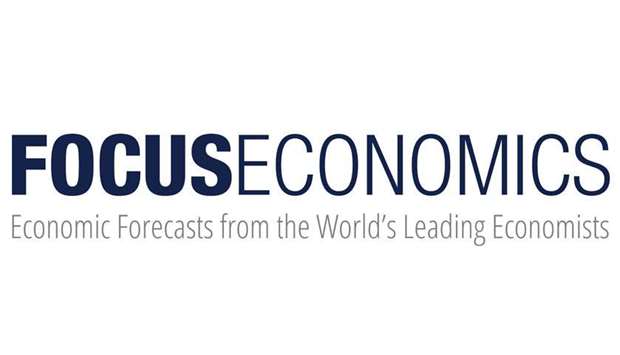Qatar’s public debt will fall gradually until 2023, FocusEconomics said, and estimated it to be at 51.2% this year, 48.9% (in 2020), 45.2% (in 2021), 42.3% (in 2022) and 39.3% (in 2023).
The researcher has estimated Qatar’s international reserves to be at $39.2bn in 2023, covering 10.4 months of imports.
Qatar’s fiscal balance as a percentage of GDP is set to rise to 5.5% in 2023 from an estimated 0.9% this year, FocusEconomics said.
The current account balance (as a percentage of the country’s GDP) will be 7.2% in 2023 compared with 7.3% in 2019.
Qatar’s merchandise trade balance, FocusEconomics said, will be $61.5bn in 2023. This year, it will account for $49.6bn.
Qatar’s gross domestic product is expected to reach $242bn by 2023, it said. By the year-end, Qatar’s GDP may total $199bn.
Qatar’s economic growth in terms of nominal GDP will reach 5.1% in 2023 from 3.5% by the year-end.
The country’s inflation, the report noted, will be 2.1% in 2023 and 0.9% this year.
Qatar’s unemployment rate (as a percentage of active population) will remain a meagre 0.2% in 2023, unchanged from this year.
According to FocusEconomics, Qatar’s economic growth should accelerate this year, “buttressed” by slightly higher hydrocarbon production, and infrastructure projects related to the 2022 World Cup.
FocusEconomics panellists see growth of 2.6% in 2019, which is unchanged from last month’s estimate, and 2.8% in 2020.
Growth should have picked up in the first quarter of this year, after a weak Q4 last year.
In Q1, the Purchasing Managers' Index (PMI), which is an indicator of economic health for manufacturing and service sectors, for the non-energy sector improved somewhat from Q4, 2018, as private sector credit growth was elevated and hotel occupancy rates improved.
Less positively, industrial production dipped in March and merchandise exports fell in Q1 in year-on-year terms, hinting at a soft energy sector.
Looking to Q2, 2019, the non-energy sector PMI survey declined in April due to more sluggish new orders growth. However, month-on-month building permits growth was “solid” in April, suggesting improving construction activity.
Consumer prices fell 0.4% year-on-year in April (March: -1.2%), as lower prices for food, communication, and recreation and culture muted price pressures.
Going forward, price pressures will likely pick up on stronger economic activity, while a subdued housing market will likely tame overall price gains. The possible introduction of VAT presents an upside risk to the inflation outlook.
FocusEconomics panellists expect inflation to average 0.9% in 2019, which is down 0.1 percentage points from last month’s forecast, and 2.2% in 2020.


